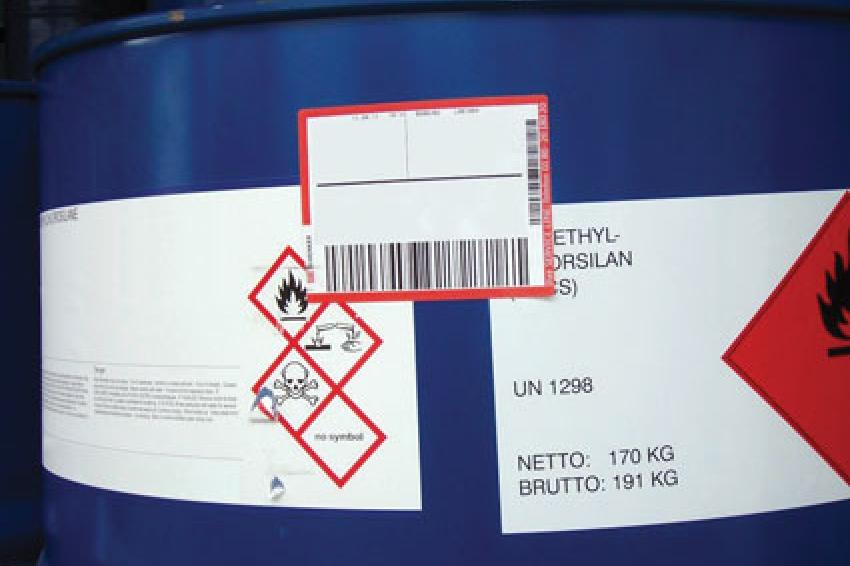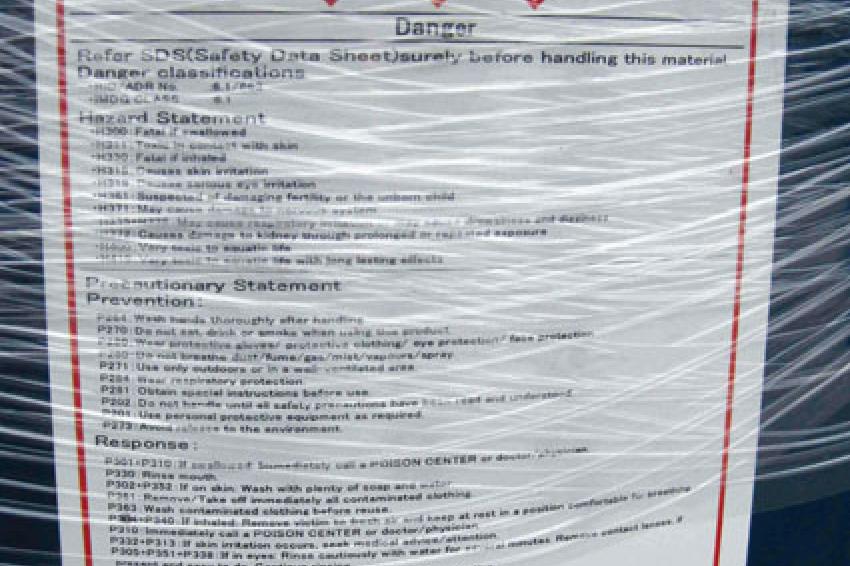GHS in Europe, One Year On
08.11.2011 -
One Year On - The regulation (EC) No 1272/2008 on the Classification, Labeling and Packaging of hazardous substances and mixtures (CLP) became mandatory for substances as of December 2010. The implementation of the Globally Harmonized System (GHS) outside of the European Community/European Economic Area is not uniform.
For example, a final legal act for making the GHS mandatory in the U.S. is still not in place. As a consequence of the building block approach of the UN GHS, we have to accept that we will have regional and national versions of the UN GHS - which is in contradiction to the promise of real global harmonization of classification/labeling of chemicals.
Among the downstream users of chemicals are logistics companies. Over the last year, they have been confronted with new hazard symbols and pictograms when their employees have loaded or unloaded packages onto trucks and containers. This is in addition to having to deal with the new contents of material safety data sheets when they check the acceptance of chemicals for storage in their warehouses. It is now time to strike an initial intermediate balance.
Initial experience with GHS
Companies intending to place hazardous substances on the market in the member states of the European Union have had two years time to prepare. Several logistics companies in Europe were surprised at the fact that many hazardous substances were not re-classified and re-labeled under the CLP regulation in time; other companies are obviously experiencing problems with the correct application of the CLP regulation; both can cause a profusion of problems.
Global players in the chemical industry in particular have taken the opportunity to re-classify and re-label their preparations/mixtures too under the CLP regulation, although they have time to do so until mid 2015. The current situation is characterized by the fact that employees loading and unloading packaging in distribution terminals and warehouses have to adopt two more or less different systems, in particular ones with symbols and pictograms.
The Impact Of GHS
The impact on logistics companies are as follows: The re-classification and, as a consequence, the re-labelling of hazardous chemicals means the update of:
- Material Safety Data Sheets (MSDS) in accordance with article 31 and annex II of the regulation (EC) No. 1907/2006 (Reach) or ISO 11014. In accordance with articles 76 and 77 of Reach a program to reinforce Reach and CLP in the EC was initiated. The relevant authorities are checking MSDS and labels to see if they are compliant with the requirements of the Reach and CLP regulation. The majority of logistics companies appreciate this initiative as a contribution to increase the quality of MSDS and labeling.
- An assessments of the risks to health and safety at work in accordance with article 9 of the directive on the introduction of measures to encourage improvements in the safety and health of workers at work (89/391).
- Explosion protection documents in accordance with articles 4 and 8 of the directive on minimum requirements for improving the safety and health protection of workers potentially at risk from explosive atmospheres (1999/92).
- Inventories of chemicals in warehouses with their specific data.
- Standard operational procedures that refer to the classification and labeling details.
- Prohibitions of mixed storage which depend on classification and labeling.
- Warning signs in accordance with the directive on the minimum requirements for the provision of safety and/or health signs at work (92/58).
- Plans for fire brigades where special areas for hazmats are marked.
Further Work
Several regulations connected with the CLP regulation (downstream legislation) that are additionally important to the services of logistics providers are awaiting an update. The most important regulations for logistics service companies are the European directive on the control of major-accident hazards involving dangerous substances (Control of Major Accident Hazards ((COMAH)) or Seveso II), which is the basis for the German statutory order on hazardous incidents and the German regulation concerning plants for which a special license is necessary.
The commission has published a draft concerning the update of the Seveso II directive (Seveso III). A consequence of the adaption of the CLP regulation is e.g. the restructuring of the requirements for the storage of aerosols. The European Insurance and Reinsurance Federation will have to update its directive on the planning and installation of sprinkler systems (directive 4001) in accordance with the new threshold values of the flashpoint for flammable liquids.
Communication
There are many symbols that are not self-explanatory. How is this new information to be publicized? Posters in the language of the country of application are very useful. This assists the employees in identifying the meaning of the more or less new symbols and pictograms and to avoid confusion. Due to the long transitional period for re-classification and re-labeling of hazardous preparations/mixtures until mid 2015, we have to accept two different labeling systems.
Summary
Specialized chemical logistics providers are often requested to support customers, especially from outside Europe in the proper application of the CLP regulation. This can present both a new challenge and an opportunity.








